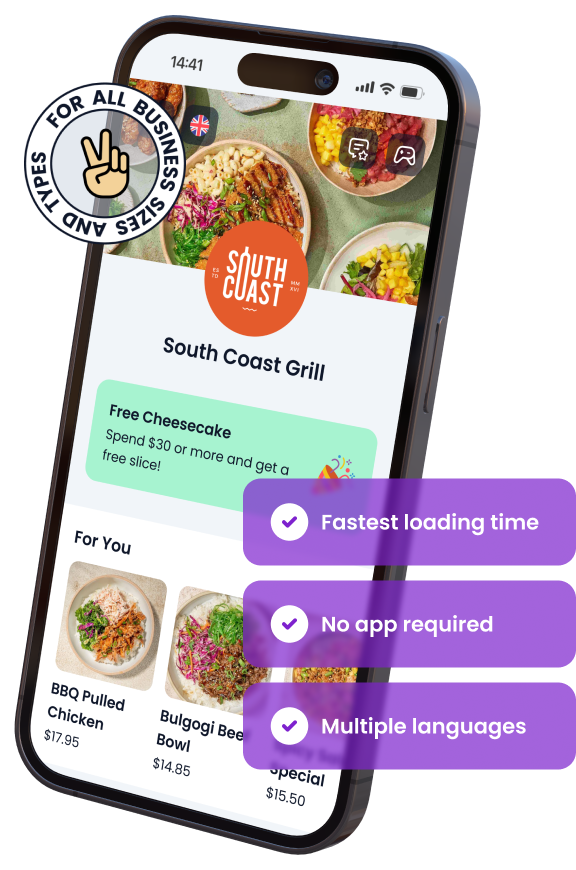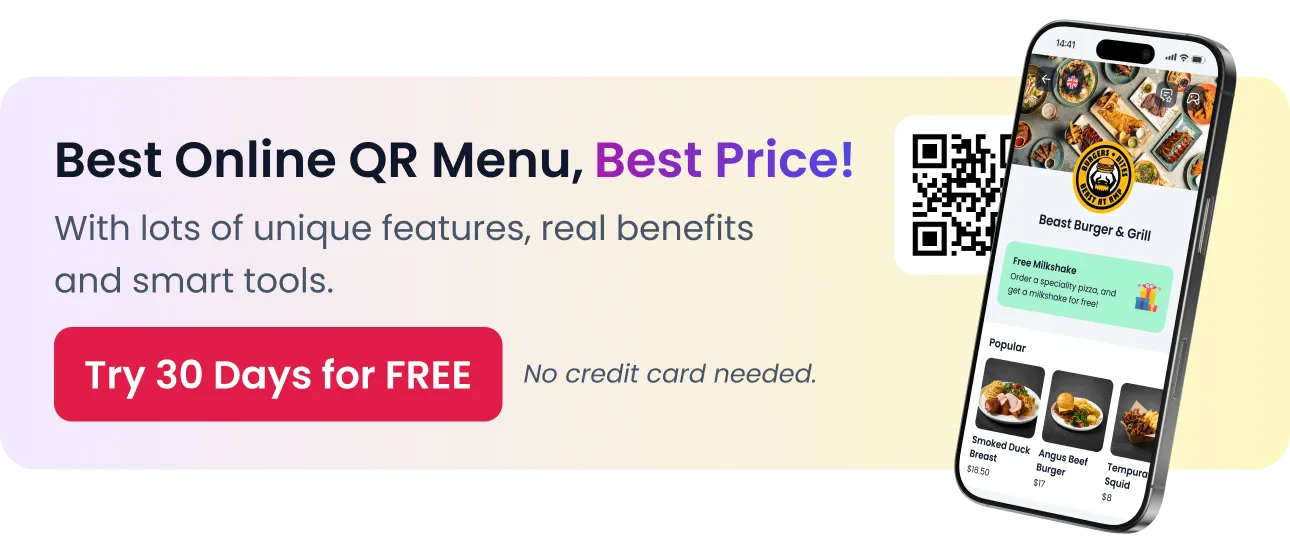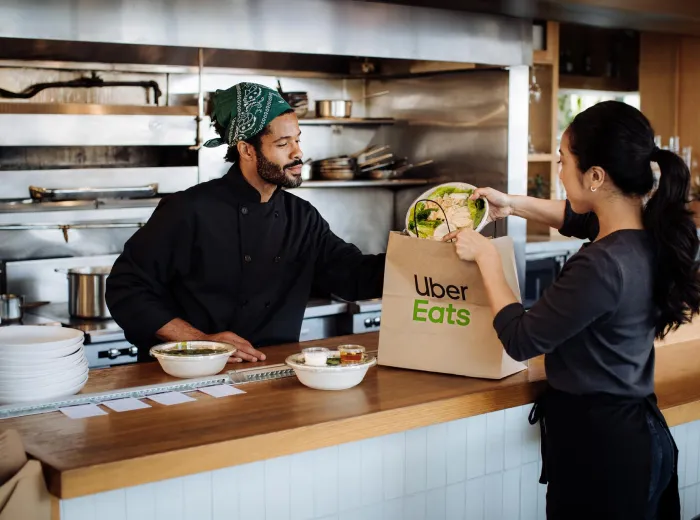

What Are The Important Restaurant KPIs and Metrics? Key Performance Indicators
Running a successful restaurant requires more than just good food and great service. In today’s competitive landscape, staying on top of your restaurant’s performance through data-driven insights is crucial. Key Performance Indicators (KPIs) and metrics are essential tools that provide a clear picture of how well your restaurant is performing across various aspects of the business. From financial health to customer satisfaction, these KPIs help you make informed decisions, streamline operations, and ultimately drive profitability.
By understanding and effectively managing these KPIs, restaurant owners can identify areas of improvement, capitalize on strengths, and ensure their business is on the right path to success. In this guide, we’ll explore the most important KPIs and metrics every restaurant should monitor, along with practical tips on how to track and optimize them.
Would you like to listen our deep-dive conversation about this article?
Understanding Restaurant KPIs and Metrics
Restaurant KPIs and metrics are the backbone of effective management, providing insights into every aspect of your business. But before diving into specific KPIs, it’s essential to understand what they are, why they matter, and how they differ.
What Are Restaurant KPIs?
Key Performance Indicators (KPIs) are measurable values that indicate how effectively a restaurant is achieving its business objectives. These can range from financial measures to customer satisfaction and operational efficiency.
- Measurable: KPIs are quantifiable, meaning you can track them over time.
- Objective-driven: KPIs are aligned with your restaurant’s specific goals, whether it’s increasing profit margins, improving customer service, or reducing waste.
- Actionable: KPIs should lead to actionable insights, helping you make data-driven decisions.
Why KPIs Matter for Restaurant Success
KPIs are not just numbers on a spreadsheet; they are critical tools that help you steer your restaurant in the right direction. Here’s why they are indispensable:
- Performance Tracking: KPIs allow you to track your restaurant’s performance in real-time, helping you identify trends and respond quickly to changes.
- Strategic Decision-Making: With clear data, you can make informed decisions that align with your long-term business goals.
- Operational Efficiency: KPIs help pinpoint inefficiencies in operations, such as high labor costs or slow table turnover, so you can take corrective action.
- Financial Health: Monitoring financial KPIs like revenue, profit margins, and costs ensure that your restaurant remains profitable.
The Difference Between KPIs and Metrics
While often used interchangeably, KPIs and metrics are not the same. Understanding the distinction is vital to effectively manage your restaurant.
- KPIs: These are the critical indicators tied directly to your strategic goals. For example, a KPI might be your restaurant’s Net Profit Margin, which directly impacts your financial health.
- Metrics: Metrics are the raw data points that feed into KPIs. For instance, daily sales figures, number of customers served, or the total cost of ingredients are all metrics. While valuable, they are often broader and less directly tied to strategic objectives than KPIs.
| Category | Example KPI | Example Metric |
|---|---|---|
| Financial | Net Profit Margin | Daily Revenue |
| Operational | Table Turnover Rate | Number of Customers Served |
| Customer | Customer Satisfaction Score | Number of Complaints Received |
Understanding the interplay between KPIs and metrics is key to creating a robust performance management system for your restaurant. By focusing on the right KPIs, you can extract meaningful insights from your metrics and drive your business toward sustained success.
Financial KPIs: Monitoring Your Restaurant’s Profitability
The financial health of your restaurant is pivotal to its long-term success. Financial KPIs offer vital insights into your restaurant’s profitability, helping you make informed decisions that enhance revenue, control costs, and boost overall financial performance. Below, we’ll dive into the most important financial KPIs that every restaurant owner should track.
Revenue Per Available Seat Hour (RevPASH)
RevPASH is a critical KPI that measures the revenue generated per seat per hour. It helps you understand how effectively your seating capacity is being utilized, providing insights into both operational efficiency and revenue potential.
Formula:
RevPASH = Total Revenue / Available Seat Hours
How to Optimize RevPASH:
- Increase table turnover: Streamline service to reduce the time each table is occupied.
- Upsell menu items: Encourage servers to upsell high-margin items to boost average spend per customer.
- Optimize reservation management: Maximize seat occupancy by efficiently managing reservations and walk-ins.
Gross Profit Margin
Gross Profit Margin shows the percentage of revenue that exceeds the cost of goods sold (COGS). It’s a crucial KPI for understanding how efficiently your restaurant is converting sales into actual profit.
Formula:
Gross Profit Margin = [(Total Revenue – COGS) / Total Revenue] * 100
Strategies to Improve Gross Profit Margin:
- Negotiate with suppliers: Secure better pricing on ingredients to lower COGS.
- Menu engineering: Focus on high-margin items by promoting and pricing them effectively.
- Reduce waste: Implement strict inventory control to minimize food waste and loss.
Net Profit Margin
Net Profit Margin is the percentage of revenue remaining after all expenses, including COGS, labor, rent, and utilities, have been deducted. It gives a clear picture of your restaurant’s overall profitability.
Formula:
Net Profit Margin = (Net Profit / Total Revenue) * 100
Improving Net Profit Margin:
- Control operational costs: Regularly review and reduce unnecessary expenses.
- Increase sales: Boost revenue through marketing initiatives, special promotions, and enhancing customer experience.
- Monitor labor costs: Ensure staffing levels match business needs to avoid overstaffing.
Cost of Goods Sold (COGS)
COGS is a KPI that measures the direct costs attributable to the production of food and beverages sold by your restaurant. It includes the cost of ingredients, packaging, and other direct costs.
Formula:
COGS = Beginning Inventory + Purchases – Ending Inventory
Tips to Reduce COGS:
- Efficient inventory management: Track inventory closely to avoid over-ordering and wastage.
- Standardize recipes: Ensure consistency in portion sizes to control costs.
- Supplier management: Regularly review supplier contracts to find better deals.
Break-Even Point
The break-even point is the level of sales at which your restaurant covers all its costs, with no profit or loss. Knowing your break-even point is crucial for setting realistic sales targets.
Formula:
Break-Even Point = Fixed Costs / (Revenue per Unit – Variable Cost per Unit)
Using Break-Even Analysis:
- Set sales targets: Determine the minimum revenue needed to cover costs.
- Pricing strategy: Adjust menu prices to ensure you’re covering all costs while remaining competitive.
- Cost control: Regularly review and optimize both fixed and variable costs to lower the break-even point.
| Financial KPI | Formula | Purpose |
|---|---|---|
| Revenue Per Available Seat Hour (RevPASH) | Total Revenue / Available Seat Hours | Measures revenue efficiency per seat per hour |
| Gross Profit Margin | (Total Revenue – COGS) / Total Revenue x 100 | Indicates profitability before operating expenses |
| Net Profit Margin | Net Profit / Total Revenue x 100 | Reflects overall profitability after all expenses |
| Cost of Goods Sold (COGS) | Beginning Inventory + Purchases – Ending Inventory | Tracks the cost of ingredients and materials |
| Break-Even Point | Fixed Costs / (Revenue per Unit – Variable Cost per Unit) | Determines the sales needed to cover all costs |
Monitoring these financial KPIs allows you to keep a close eye on your restaurant’s profitability, making it easier to identify areas for improvement and take strategic actions that enhance your bottom line.
Operational KPIs: Enhancing Restaurant Efficiency
Operational efficiency is critical for the smooth running of your restaurant. By monitoring key operational KPIs, you can identify bottlenecks, improve service quality, and maximize productivity. This section will cover the most important operational KPIs that you should track to enhance your restaurant’s efficiency.
Table Turnover Rate
Table Turnover Rate measures how quickly tables are being cleared and prepared for new guests. A higher turnover rate generally indicates greater efficiency and the potential for increased revenue.
Formula:
Table Turnover Rate = Number of Guests Served / Number of Tables
Ways to Improve Table Turnover Rate:
- Streamline service processes: Ensure that servers are well-trained and can manage their tables efficiently.
- Simplify the menu: A shorter menu can speed up decision-making and preparation times.
- Use technology: Implement digital ordering systems to reduce wait times for placing orders and processing payments.
Labor Cost Percentage
Labor Cost Percentage is a KPI that tracks the portion of your revenue that goes toward paying your staff. Keeping labor costs in check is essential for maintaining profitability.
Formula:
Labor Cost Percentage = (Total Labor Costs / Total Revenue) * 100
Strategies to Optimize Labor Costs:
- Schedule based on demand: Use sales data to predict busy times and schedule staff accordingly.
- Cross-train employees: Train staff to perform multiple roles, allowing for greater flexibility in staffing.
- Monitor overtime: Keep a close eye on overtime hours to prevent unnecessary labor costs.
Inventory Turnover Rate
Inventory Turnover Rate measures how often your restaurant’s inventory is sold and replaced over a specific period. This KPI is crucial for managing cash flow and reducing waste.
Formula:
Inventory Turnover Rate = Cost of Goods Sold (COGS) / Average Inventory Value
Tips for Improving Inventory Turnover:
- Optimize inventory levels: Avoid overstocking by ordering just enough to meet demand.
- Use inventory management software: Track inventory levels in real-time to reduce waste and spoilage.
- Review menu offerings: Regularly assess the popularity of menu items and adjust inventory orders accordingly.
Average Check Size
Average Check Size, also known as Average Revenue Per Customer, measures the average amount of money spent by each customer during their visit. Increasing the average check size can significantly boost your overall revenue.
Formula:
Average Check Size = Total Revenue / Number of Guests Served
How to Increase Average Check Size:
- Upselling and cross-selling: Train staff to suggest complementary items or premium options.
- Promotions and combos: Create meal deals or combos that encourage customers to spend more.
- Highlight high-margin items: Feature profitable items prominently on the menu.
Customer Wait Time
Customer Wait Time is the average time a customer waits for service, whether it’s being seated, placing an order, or receiving their food. Long wait times can negatively impact customer satisfaction and reduce repeat business.
Strategies to Reduce Customer Wait Time:
- Efficient seating management: Use reservation systems to manage table availability and minimize wait times.
- Optimize kitchen operations: Ensure the kitchen is well-staffed and processes are streamlined to reduce food preparation time.
- Implement digital ordering: Allow customers to place orders via tablets or smartphones to speed up the ordering process.
| Operational KPI | Formula | Purpose |
|---|---|---|
| Table Turnover Rate | Number of Guests Served / Number of Tables | Measures efficiency in managing table availability |
| Labor Cost Percentage | (Total Labor Costs / Total Revenue) x 100 | Tracks labor costs as a percentage of revenue |
| Inventory Turnover Rate | COGS / Average Inventory Value | Indicates how efficiently inventory is being used |
| Average Check Size | Total Revenue / Number of Guests Served | Measures average spend per customer |
| Customer Wait Time | (Total Wait Time / Number of Customers) | Assesses the efficiency of customer service |
Monitoring these operational KPIs allows you to identify areas where your restaurant can improve efficiency, reduce costs, and ultimately enhance the customer experience. By focusing on these metrics, you can ensure that your operations are streamlined and that you are maximizing your restaurant’s potential for profitability.
Customer Satisfaction KPIs: Building a Loyal Customer Base
Customer satisfaction is a critical driver of your restaurant’s success. Happy customers are more likely to return, leave positive reviews, and recommend your restaurant to others. By tracking specific customer satisfaction KPIs, you can gain valuable insights into how well your restaurant is meeting customer expectations and where there’s room for improvement. Below are the key KPIs that every restaurant should monitor to build and maintain a loyal customer base.
Customer Satisfaction Score (CSAT)
Customer Satisfaction Score (CSAT) is a KPI that measures how satisfied customers are with your restaurant’s service, food, and overall experience. It is typically gathered through surveys and feedback forms.
How to Calculate CSAT:
- Survey Example: “How satisfied were you with your visit today?”
- Response Scale: Typically a scale from 1 to 5 (1 = Very Dissatisfied, 5 = Very Satisfied)
- Formula:
CSAT = (Number of Satisfied Customers / Total Responses) * 100
Strategies to Improve CSAT:
- Prompt feedback: Encourage customers to provide feedback immediately after their dining experience.
- Address common issues: Use feedback to identify and resolve recurring problems.
- Personalize service: Train staff to deliver a personalized dining experience that exceeds expectations.
Net Promoter Score (NPS)
Net Promoter Score (NPS) is a KPI that measures customer loyalty by assessing the likelihood that customers will recommend your restaurant to others. It’s a powerful indicator of long-term customer relationships.
How to Calculate NPS:
- Survey Question: “How likely are you to recommend our restaurant to a friend or colleague?”
- Response Scale: 0 to 10 (0 = Not at All Likely, 10 = Extremely Likely)
- Categories:
- Promoters (9-10): Loyal customers who will likely recommend your restaurant.
- Passives (7-8): Satisfied but unenthusiastic customers.
- Detractors (0-6): Unhappy customers who may discourage others from visiting.
- Formula:
NPS = %Promoters – %Detractors
Ways to Increase NPS:
- Enhance customer experience: Focus on delivering consistent, high-quality service and food.
- Engage with detractors: Reach out to unhappy customers to understand their concerns and offer solutions.
- Reward promoters: Create loyalty programs or special offers to encourage repeat visits and referrals.
Online Review Ratings
Online reviews on platforms like Google, Yelp, and TripAdvisor play a significant role in your restaurant’s reputation. Monitoring and managing your online review ratings is essential for attracting new customers and retaining existing ones.
How to Track Online Review Ratings:
- Average Rating: Monitor the average rating across different platforms (e.g., Google: 4.5/5).
- Number of Reviews: Keep track of the volume of reviews to gauge the overall sentiment.
- Trends: Analyze trends in reviews over time to identify any changes in customer perception.
Strategies to Improve Online Ratings:
- Respond to reviews: Engage with customers by responding to both positive and negative reviews professionally.
- Encourage positive reviews: Ask satisfied customers to leave reviews, especially on platforms where your rating is lower.
- Address negative feedback: Take immediate action to resolve issues mentioned in negative reviews and communicate the improvements publicly.
Repeat Customer Rate
Repeat Customer Rate is a KPI that measures the percentage of customers who return to your restaurant over a specific period. A high repeat customer rate indicates strong customer loyalty and satisfaction.
Formula:
Repeat Customer Rate = (Number of Returning Customers / Total Number of Customers) * 100
Tactics to Boost Repeat Customer Rate:
- Loyalty programs: Offer rewards or discounts to customers who frequently visit your restaurant.
- Personalized marketing: Use customer data to send personalized offers or invitations.
- Consistent quality: Ensure that the dining experience is consistently excellent, encouraging customers to return.
| Customer Satisfaction KPI | Measurement Method | Purpose |
|---|---|---|
| Customer Satisfaction Score (CSAT) | Surveys and feedback forms | Measures overall customer satisfaction |
| Net Promoter Score (NPS) | Customer surveys on likelihood to recommend | Assesses customer loyalty and likelihood of referrals |
| Online Review Ratings | Review platforms like Google, Yelp, TripAdvisor | Tracks online reputation and public perception |
| Repeat Customer Rate | Customer purchase history | Measures customer loyalty and the effectiveness of retention strategies |
By closely monitoring these customer satisfaction KPIs, you can gain valuable insights into your customers’ experiences and take proactive steps to enhance their satisfaction. Building a loyal customer base not only increases repeat business but also strengthens your restaurant’s reputation, leading to long-term success.
Marketing KPIs: Driving Growth and Engagement
Effective marketing is essential for attracting new customers and retaining existing ones. By tracking specific marketing KPIs, you can measure the success of your campaigns, optimize your strategies, and ensure that your marketing efforts are contributing to the growth and engagement of your restaurant. Below are the key marketing KPIs that every restaurant should monitor.
Customer Acquisition Cost (CAC)
Customer Acquisition Cost (CAC) is a KPI that measures the cost associated with acquiring a new customer through your marketing efforts. Understanding your CAC helps you determine the efficiency of your marketing spend.
Formula:
CAC = Total Marketing and Sales Costs / Number of New Customers Acquired
Ways to Reduce CAC:
- Targeted marketing: Focus on reaching the right audience to increase conversion rates.
- Leverage organic channels: Use social media, SEO, and word-of-mouth to acquire customers at a lower cost.
- Referral programs: Encourage existing customers to refer others with incentives, reducing the need for costly advertising.
Return on Marketing Investment (ROMI)
Return on Marketing Investment (ROMI) measures the effectiveness of your marketing campaigns by comparing the revenue generated from marketing activities to the costs incurred.
Formula:
ROMI = (Revenue Attributable to Marketing / Marketing Spend) * 100
Improving ROMI:
- Analyze campaign performance: Regularly review which campaigns are delivering the highest returns.
- Optimize ad spend: Allocate more budget to high-performing channels and reduce spending on underperforming ones.
- A/B testing: Test different marketing strategies to determine which approach generates the best results.
Social Media Engagement Rate
Social Media Engagement Rate is a KPI that measures how actively your audience is interacting with your social media content. High engagement indicates that your content resonates with your audience and helps to build a loyal community.
Key Metrics to Track:
- Likes, Comments, Shares: Measure how often your posts are liked, commented on, and shared.
- Follower Growth Rate: Track the increase in followers over time.
- Engagement Rate Formula:
Engagement Rate = (Total Engagements (Likes, Comments, Shares) / Total Followers) * 100
Strategies to Boost Engagement:
- Create shareable content: Focus on high-quality images, videos, and stories that encourage interaction.
- Engage with followers: Respond to comments and messages to build relationships with your audience.
- Run promotions and contests: Encourage participation through giveaways or contests that require users to engage with your content.
Email Open and Click-Through Rates
Email marketing remains a powerful tool for reaching customers directly. Open and Click-Through Rates are critical KPIs for measuring the effectiveness of your email campaigns.
Key Metrics:
- Open Rate: Percentage of recipients who open your email.
- Click-Through Rate (CTR): Percentage of recipients who click on links within your email.
Formulas:
- Open Rate:
Open Rate = (Emails Opened / Emails Sent) * 100
- Click-Through Rate:
CTR = (Clicks on Links / Emails Sent) * 100
Tips to Improve Open and Click-Through Rates:
- Personalize subject lines: Use the recipient’s name or tailor the subject line to their interests.
- Segment your email list: Send targeted emails based on customer behavior or preferences.
- Test send times: Experiment with different days and times to see when your audience is most likely to open and engage with your emails.
| Marketing KPI | Measurement Method | Purpose |
|---|---|---|
| Customer Acquisition Cost (CAC) | Total Marketing Costs / Number of New Customers | Measures the cost-effectiveness of acquiring new customers |
| Return on Marketing Investment (ROMI) | (Revenue Attributable to Marketing / Marketing Spend) x 100 | Evaluates the profitability of marketing efforts |
| Social Media Engagement Rate | (Total Engagements / Total Followers) x 100 | Tracks audience interaction with social media content |
| Email Open Rate | (Emails Opened / Emails Sent) x 100 | Measures the effectiveness of email subject lines |
| Email Click-Through Rate (CTR) | (Clicks on Links / Emails Sent) x 100 | Indicates the effectiveness of email content and calls to action |
Monitoring these marketing KPIs allows you to assess the effectiveness of your strategies and optimize your marketing efforts to drive growth and engagement. By focusing on these metrics, you can ensure that your marketing activities are delivering the desired results and contributing to the overall success of your restaurant.
Employee Performance KPIs: Enhancing Workforce Productivity
Your staff plays a crucial role in the success of your restaurant. Monitoring employee performance KPIs helps you assess how effectively your team is contributing to your business goals, identify areas for improvement, and implement strategies to boost productivity and morale. Below are the key employee performance KPIs that every restaurant should track.
Employee Turnover Rate
Employee Turnover Rate is a KPI that measures the percentage of employees who leave your restaurant over a specific period. High turnover can indicate underlying issues such as low job satisfaction, inadequate compensation, or poor management.
Formula:
Employee Turnover Rate = (Number of Employees Who Left / Average Number of Employees) * 100
Ways to Reduce Employee Turnover:
- Improve onboarding: Provide thorough training and a positive introduction to the workplace.
- Enhance job satisfaction: Offer competitive wages, benefits, and opportunities for career advancement.
- Foster a positive work environment: Promote a culture of teamwork, respect, and recognition.
Staff Productivity Metrics
Staff Productivity Metrics help you measure how effectively your employees are performing their duties. These metrics can include a range of indicators depending on the role, such as the number of tables served by a waiter or the number of dishes prepared by a chef per hour.
Key Productivity Metrics:
- Tables Served per Hour: How many tables a server can manage within an hour.
- Dishes Prepared per Hour: The number of meals a chef can prepare in a given time frame.
- Order Accuracy Rate: Percentage of orders prepared and delivered without mistakes.
Improving Staff Productivity:
- Training: Provide ongoing training to improve skills and efficiency.
- Technology: Use technology, such as POS systems, to streamline order taking and processing.
- Incentives: Offer performance-based incentives to motivate staff to work efficiently.
Training Completion Rate
Training Completion Rate is a KPI that tracks the percentage of employees who have successfully completed required training programs. This metric is vital for ensuring that all staff members are equipped with the knowledge and skills they need to perform their jobs effectively.
Formula:
Training Completion Rate = Number of Employees Who Completed Training / Total Number of Employees
Strategies to Improve Training Completion:
- Set clear deadlines: Establish timelines for when training should be completed.
- Provide accessible training materials: Use online platforms or in-house sessions that are easy for employees to attend.
- Monitor progress: Regularly check in on employees’ training progress and offer support as needed.
Employee Satisfaction Score
Employee Satisfaction Score is a KPI that measures how happy and content your employees are with their jobs. Satisfied employees are more likely to be productive, stay longer with the company, and deliver better customer service.
How to Measure Employee Satisfaction:
- Surveys: Conduct regular surveys asking employees to rate their satisfaction with various aspects of their job.
- Feedback: Encourage open feedback sessions where employees can share their thoughts on workplace conditions.
- Formula:
Employee Satisfaction Score = (Total Satisfaction Ratings / Total Responses) * 100
Improving Employee Satisfaction:
- Recognition and rewards: Regularly recognize and reward employees for their hard work.
- Work-life balance: Ensure that employees have a healthy work-life balance, with fair scheduling and time off.
- Career development: Provide opportunities for professional growth and advancement.
| Employee Performance KPI | Measurement Method | Purpose |
|---|---|---|
| Employee Turnover Rate | (Number of Employees Who Left / Average Number of Employees) x 100 | Tracks employee retention and identifies potential issues |
| Staff Productivity Metrics | Tables Served per Hour, Dishes Prepared per Hour, Order Accuracy Rate | Measures the efficiency and effectiveness of employees |
| Training Completion Rate | (Number of Employees Who Completed Training / Total Number of Employees) x 100 | Ensures all staff are properly trained for their roles |
| Employee Satisfaction Score | (Total Satisfaction Ratings / Total Responses) x 100 | Gauges overall job satisfaction and identifies areas for improvement |
Monitoring these employee performance KPIs allows you to create a more productive, motivated, and satisfied workforce. By focusing on these metrics, you can improve your restaurant’s operational efficiency, reduce turnover, and ensure that your employees are contributing positively to the success of your business.
Health and Safety KPIs: Ensuring Compliance and Safety
Maintaining high standards of health and safety in your restaurant is non-negotiable. Not only is it essential for complying with regulations, but it also protects your customers and employees, ensuring a safe and trustworthy dining environment. Monitoring health and safety KPIs helps you stay on top of compliance, prevent accidents, and maintain a stellar reputation. Here are the key health and safety KPIs that every restaurant should track.
Health Inspection Scores
Health Inspection Scores are a direct measure of your restaurant’s adherence to local health and safety regulations. These scores are typically provided by health inspectors who evaluate various aspects of your restaurant’s operations, from food handling to cleanliness.
Key Areas Assessed:
- Food storage and handling: Proper storage temperatures, cross-contamination prevention, and food labeling.
- Cleanliness: Regular cleaning schedules for kitchen areas, dining spaces, and restrooms.
- Employee hygiene: Ensuring all staff follow proper hygiene practices, including handwashing and wearing appropriate protective gear.
Strategies to Maintain High Scores:
- Regular self-inspections: Conduct regular internal audits to identify and address potential issues before official inspections.
- Training: Ensure all employees are trained in food safety and hygiene practices.
- Maintenance: Keep equipment well-maintained and ensure that all safety protocols are followed consistently.
Workplace Incident Rate
Workplace Incident Rate is a KPI that measures the frequency of workplace accidents or incidents within your restaurant. A low incident rate indicates a safe working environment, which is crucial for employee well-being and operational efficiency.
Formula:
Workplace Incident Rate = (Number of Incidents / Total Number of Employees) * 100
Ways to Reduce Workplace Incidents:
- Safety training: Regularly train employees on safe work practices and emergency procedures.
- Ergonomics: Ensure workstations are ergonomically designed to reduce the risk of injury.
- Incident reporting: Encourage employees to report hazards and near-misses promptly, so corrective actions can be taken.
Food Safety Compliance Rate
Food Safety Compliance Rate tracks how well your restaurant adheres to food safety regulations and best practices. This KPI is crucial for preventing foodborne illnesses and ensuring the safety of your customers.
Key Compliance Areas:
- Temperature control: Monitoring and maintaining correct temperatures for food storage and cooking.
- Cross-contamination prevention: Ensuring that raw and cooked foods are handled and stored separately.
- Proper food handling: Staff must follow correct procedures for handling, preparing, and serving food.
Improving Food Safety Compliance:
- Regular audits: Conduct routine checks on food safety practices and make improvements where necessary.
- Staff education: Continuously educate and train staff on the latest food safety standards and regulations.
- Use of technology: Implement digital tools to monitor food temperatures, track expiration dates, and document compliance efforts.
Employee Health and Safety Training Rate
Employee Health and Safety Training Rate measures the percentage of employees who have completed health and safety training. Ensuring that all staff are trained reduces the likelihood of accidents and improves overall safety in your restaurant.
Formula:
Training Rate = (Number of Employees Trained / Total Number of Employees) * 100
Boosting Training Rates:
- Mandatory training sessions: Make health and safety training a mandatory part of onboarding and regular staff development.
- Accessible training materials: Provide easy access to training resources, such as online courses and hands-on workshops.
- Tracking and reminders: Use software to track training completion and send reminders to staff who need to complete their training.
| Health and Safety KPI | Measurement Method | Purpose |
|---|---|---|
| Health Inspection Scores | Official inspection reports | Measures compliance with health and safety regulations |
| Workplace Incident Rate | (Number of Incidents / Total Number of Employees) x 100 | Tracks the frequency of workplace accidents |
| Food Safety Compliance Rate | Regular audits and monitoring | Ensures adherence to food safety standards and practices |
| Employee Health and Safety Training Rate | (Number of Employees Trained / Total Number of Employees) x 100 | Ensures that all employees are trained in safety protocols |
Monitoring these health and safety KPIs is vital to maintaining a safe, compliant, and reliable restaurant operation. By focusing on these metrics, you can prevent potential health hazards, protect your staff and customers, and uphold your restaurant’s reputation for safety and quality.
How to Set and Monitor KPIs for Your Restaurant
Setting and monitoring the right KPIs is essential for driving your restaurant’s success. By aligning KPIs with your business goals, you can gain actionable insights that inform decision-making, optimize operations, and enhance profitability. In this section, we’ll explore how to effectively set and monitor KPIs for your restaurant.
Choosing the Right KPIs for Your Restaurant
Not all KPIs will be relevant to every restaurant. The key is to choose KPIs that align with your specific business goals and operational priorities.
Steps to Choose the Right KPIs:
- Identify your goals: Define what you want to achieve (e.g., increase profit margins, improve customer satisfaction, reduce costs).
- Prioritize areas of focus: Determine which areas of your business are most critical to achieving your goals (e.g., financial performance, customer service, operational efficiency).
- Select relevant KPIs: Choose KPIs that directly measure performance in your priority areas (e.g., Net Profit Margin for financial goals, CSAT for customer satisfaction).
Examples of Goal-KPI Alignment:
- Goal: Increase revenue.
- KPIs: Average Check Size, RevPASH, Customer Acquisition Cost (CAC).
- Goal: Improve customer satisfaction.
- KPIs: Net Promoter Score (NPS), Customer Satisfaction Score (CSAT), Online Review Ratings.
- Goal: Enhance operational efficiency.
- KPIs: Table Turnover Rate, Inventory Turnover Rate, Labor Cost Percentage.
Tools for Tracking and Analyzing KPIs
Effective KPI monitoring requires the right tools to collect, track, and analyze data. Fortunately, there are various software solutions designed to help restaurant owners manage their KPIs efficiently.
Popular KPI Tracking Tools:
- Point of Sale (POS) Systems: Many POS systems offer built-in reporting features that track sales, labor costs, and inventory.
- Restaurant Management Software: Comprehensive solutions like Toast, Upserve, or Square for Restaurants offer KPI dashboards that provide real-time insights.
- Spreadsheet Tools: For a more customized approach, tools like Excel or Google Sheets can be used to create KPI tracking templates tailored to your specific needs.
- Business Intelligence (BI) Tools: Advanced BI tools like Tableau or Power BI allow for deeper data analysis and visualization, helping you uncover trends and insights.
Benefits of Using KPI Tracking Tools:
- Automation: Reduces the time and effort required to manually track and calculate KPIs.
- Real-time data: Provides up-to-date information that allows for quicker decision-making.
- Customization: Enables you to tailor reports and dashboards to focus on the KPIs that matter most to your business.
Regular KPI Review Process
Monitoring KPIs isn’t a one-time task; it requires regular review and adjustment to ensure that your restaurant stays on track to meet its goals.
Steps for a Regular KPI Review Process:
- Set a review schedule: Determine how often you will review your KPIs (e.g., weekly, monthly, quarterly).
- Analyze performance: Compare actual performance against your targets to identify trends, opportunities, and areas for improvement.
- Adjust strategies: If KPIs are not meeting targets, assess the underlying causes and adjust your strategies accordingly (e.g., changing pricing, revising marketing efforts, or improving staff training).
- Communicate results: Share KPI performance with your team to keep everyone aligned and motivated toward achieving common goals.
KPI Review Meeting Agenda Example:
- Review previous performance: Compare the last period’s KPI data with current data.
- Discuss key successes and challenges: Highlight areas where KPIs have improved or fallen short.
- Identify action items: Determine specific actions needed to improve performance.
- Set new targets: Adjust KPI targets if necessary, based on current business conditions.
By setting the right KPIs, leveraging effective tracking tools, and establishing a regular review process, you can ensure that your restaurant remains focused on its strategic objectives and continuously improves its performance. This approach enables you to make data-driven decisions that lead to sustained success and profitability in your restaurant business.
Mastering Restaurant KPIs for Sustained Success
In the highly competitive restaurant industry, success hinges not just on the quality of food and service but on the ability to measure and manage performance effectively. By focusing on the right Key Performance Indicators (KPIs), restaurant owners can gain invaluable insights into every aspect of their business, from financial health to operational efficiency, customer satisfaction, marketing impact, employee productivity, and health and safety standards.
Regularly monitoring these KPIs allows you to identify strengths, address weaknesses, and make data-driven decisions that drive growth and profitability. Whether you’re looking to improve your revenue, enhance customer loyalty, streamline operations, or ensure compliance, a well-rounded approach to KPI management is your roadmap to long-term success in the restaurant industry.
Remember, the key to mastering KPIs is consistency—setting clear goals, using the right tools, and regularly reviewing and adjusting your strategies will keep your restaurant on track and thriving in an ever-evolving marketplace.
ABOUT THE AUTHOR
Erkin Coban
Your Customers Deserve The Best
And we got Menuviel for them.
The fastest and easy-to-use online QR menu with 12+ unique features. Choose Menuviel and elevate your service quality to the next level.
Use free for the first 30 days.

In This Article

Free AI Tools for Restaurants
TRY NOW ➜

Grab attention with promo and pop-up banners
Highlight offers, events, or announcements right on your menu. At the top or as a pop-up banner.







